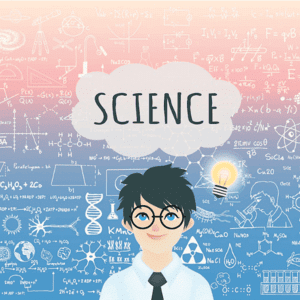Best Study Material for Class 8 Exam
Class 8 Exam > Class 8 Notes > Science Class 8 > Important Points - Light
Important Points - Light | Science Class 8 PDF Download
Points to remember:
1. There can be only one reflected ray for a given single incident ray falling on a plane mirror.
2. A ray of light which is incident normally on a mirror is reflected along the same path because the angle of incidence for such a ray of light is 0 degrees. Therefore, the angle of reflection is also 0 degrees.
3. Diffuse reflection is caused by the roughness in the reflecting surface of an object.
4. Laws of reflection are valid for both regular reflection & irregular reflection.
5. If a person is standing at a distance of 1 meter in front of a plane mirror, then the distance between the person & his image will be 2 meters.
6. In an image formed by a plane mirror, the left side of the object appears on the right side in the image whereas the right side of the object appears on the left side of the image.
This change of sides of an object & its mirror image is called Lateral inversion.
7. As the angle between the two plane mirrors decreases, the number of images formed increases.
When the angle between the two plane mirrors becomes 0 degrees i.e. When the two mirrors are parallel to each other then an infinite number of images is formed.
8. An interesting feature of a kaleidoscope is that we can never see the same patterns again. Every time a new pattern is formed. Kaleidoscope are used by designers of wallpaper and fabrics, as well as by artists to get ideas for new patterns.
6. In an image formed by a plane mirror, the left side of the object appears on the right side in the image whereas the right side of the object appears on the left side of the image.
This change of sides of an object & its mirror image is called Lateral inversion.
7. As the angle between the two plane mirrors decreases, the number of images formed increases.
When the angle between the two plane mirrors becomes 0 degrees i.e. When the two mirrors are parallel to each other then an infinite number of images is formed.
8. An interesting feature of a kaleidoscope is that we can never see the same patterns again. Every time a new pattern is formed. Kaleidoscope are used by designers of wallpaper and fabrics, as well as by artists to get ideas for new patterns.
Question for Important Points - Light
Try yourself:
What is the reason behind the formation of diffuse reflection?View Solution
10. The adjustment of the size of the pupil takes some time. That’s when we go from a bright light to a darkened cinema hall, at first we cannot see our surroundings.
 Rainbow.11. The range of vision of a normal human eye is from infinity to about 25 centimeters.
Rainbow.11. The range of vision of a normal human eye is from infinity to about 25 centimeters.Question for Important Points - Light
Try yourself:
What is the phenomenon that causes a rainbow to appear in the sky?View Solution
The document Important Points - Light | Science Class 8 is a part of the Class 8 Course Science Class 8.
All you need of Class 8 at this link: Class 8
|
92 videos|287 docs|44 tests
|
FAQs on Important Points - Light - Science Class 8
| 1. What is light and how does it travel ? |  |
| 2. What are the different properties of light ? |  |
Ans. The main properties of light include reflection, refraction, dispersion, and interference. Reflection occurs when light bounces off a surface, refraction is the bending of light as it passes from one medium to another, dispersion is the separation of light into its component colors, and interference involves the interaction of light waves.
| 3. How do we perceive colors through light ? |  |
Ans. Colors are perceived through the wavelengths of light that are reflected off objects and detected by our eyes. The human eye has three types of cones that are sensitive to different ranges of wavelengths (red, green, and blue). Our brain combines the signals from these cones to create the perception of color.
| 4. What is the significance of the visible spectrum in light ? |  |
Ans. The visible spectrum is the portion of the electromagnetic spectrum that can be seen by the human eye, ranging from approximately 380 to 750 nanometers in wavelength. It is significant because it encompasses all the colors of light that we can perceive, from violet to red, and forms the basis for color vision.
| 5. How does light interact with matter ? |  |
Ans. Light interacts with matter in several ways, including absorption, transmission, reflection, and scattering. When light hits an object, some wavelengths may be absorbed, others may be transmitted through the material, some may be reflected, and some may scatter in different directions, influencing how we perceive the object.
Related Searches































